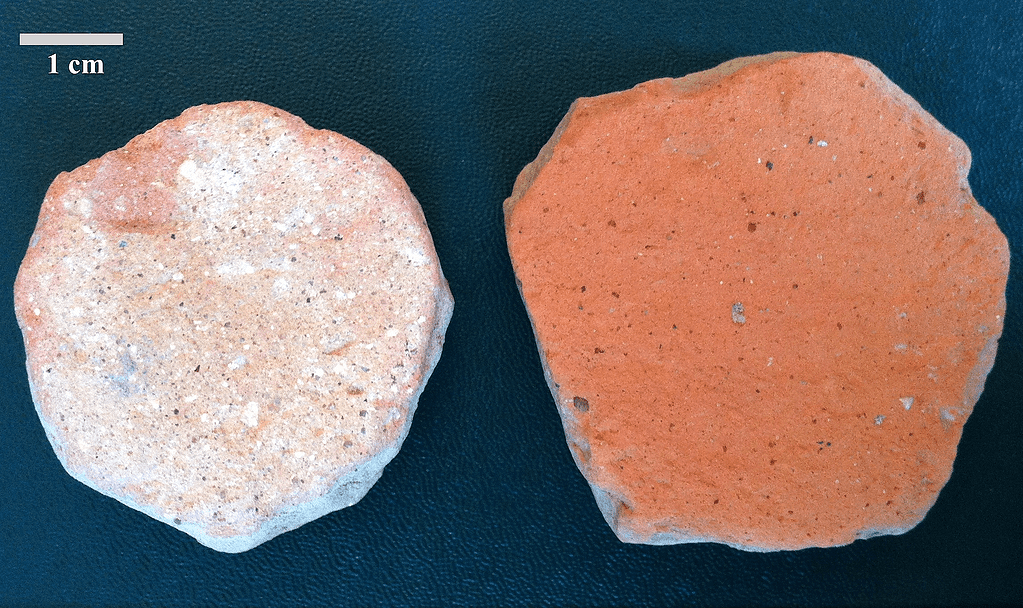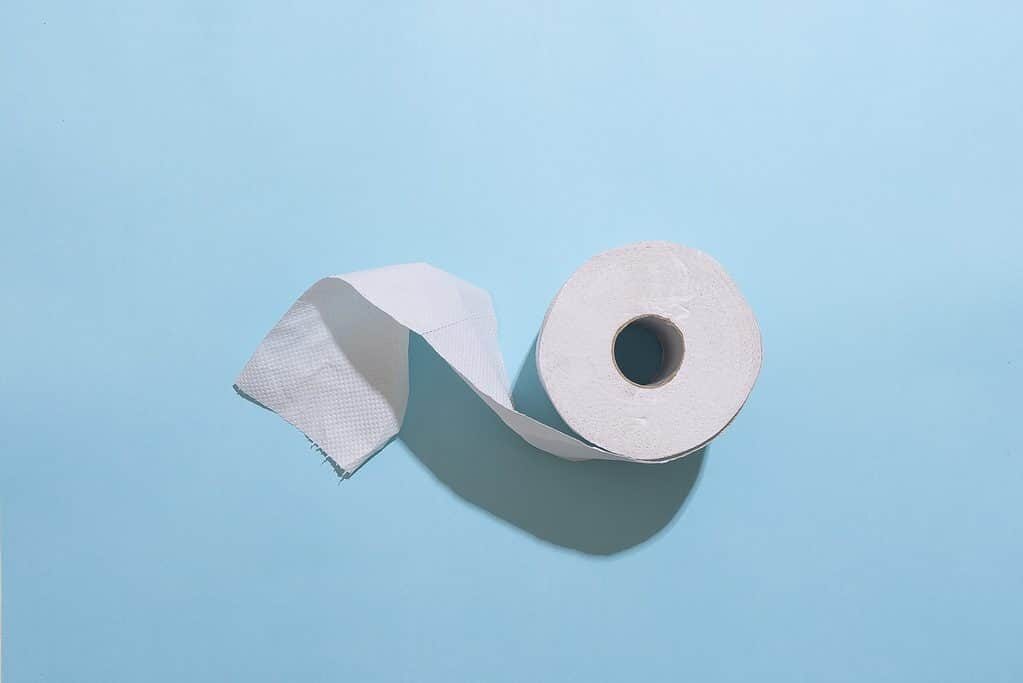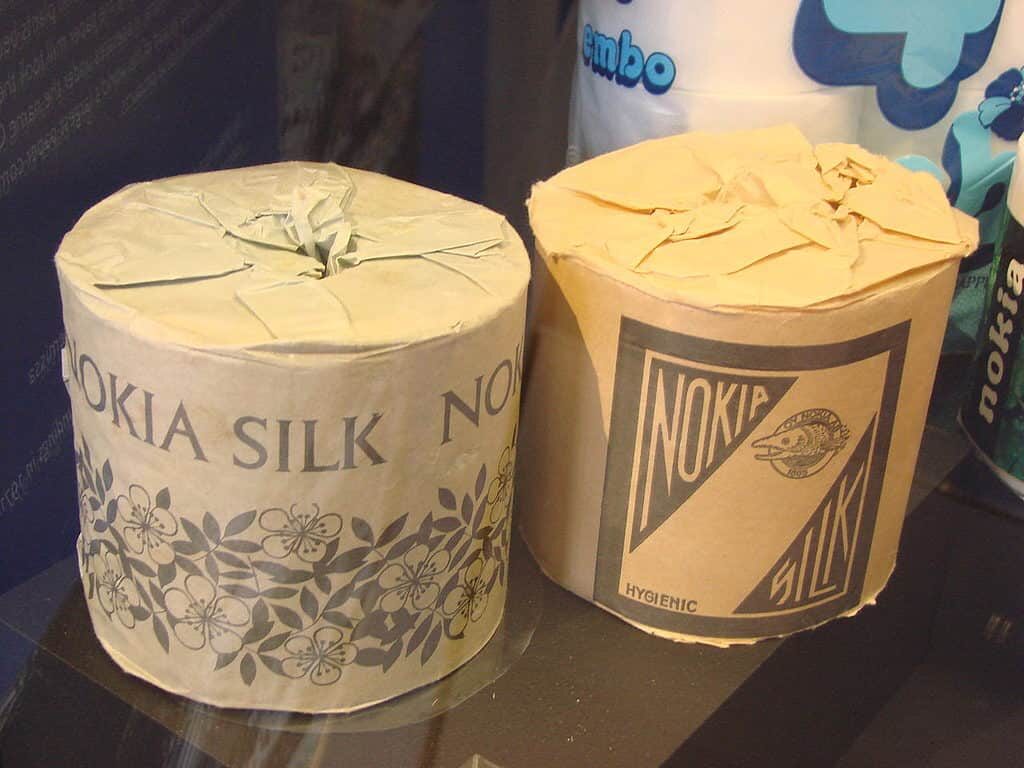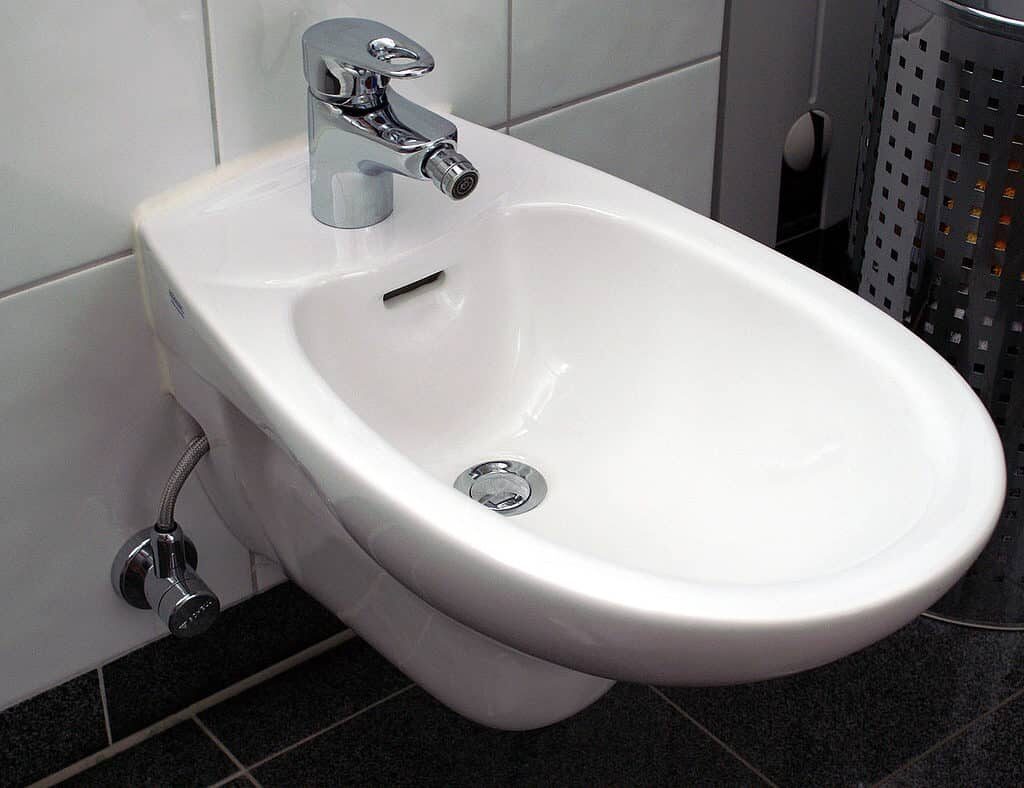Everyone poops, but not everyone uses toilet paper. It's estimated that over half of the world's population doesn't use toilet paper (most of them use water instead). But what did people do before we had access to toilet paper or modern bidets? Believe it or not, our ancestors used a wide array of approaches to wipe our behinds.
Dark history
Believe it or not, history doesn't seem to focus a lot on how people cleaned up after going "number two." We don't know what people used ten thousand years ago or more, and there's not much historical evidence or written text about this.
But since people in non-industrialized parts of the world (and camping trips) use things like leaves or cobs, that may have been the case in the very-olden days. But whatever the large-scale practices were, they are not well preserved in the archaeological record or in writing before the Greco-Roman times.
Still, some clues remain.
For instance, some cultures today use a 'lota', a type of small, spouted vessel traditionally made of brass or copper to spray clean the booty after the dirty business, and lotas dating back to the 2nd millennium BC have been uncovered. It's probably safe to assume that throughout history, water has been widely used for cleaning, possibly with a cloth towel, fur, or another material used for wiping.
But that only works if you have a hefty supply of water and sewage. Some ancient civilizations had this. Almost every house unit at Harappa, Mohenjo-Daro, and Lothal (all ancient civilizations older than 3500 years old) was equipped with a private bath-toilet area with drains that could take the dirty water out into a larger drain that emptied into the sewage and drainage system.
It was the Greeks and Romans, however, that designed a type of lavatory that survived, with small modifications, for over 1500 years (until the modern age).
Wiping with things
The Romans' list of innovations is remarkable. During its almost 1,000-year existence, the Roman civilization developed technologies that transformed the world; one of these technologies was toilets.
The Romans were big on hygiene because they realized what a big problem sanitation can be for a big city. You can't really build a world-leading civilization if you're fighting parasites and diarrhea. So the Romans set up an elaborate sanitation system that included public toilets, as well as the famous aqueducts and the entire sewerage that connected the two. It wasn't perfect, there were still parasites, but it worked very well for its time.
But what did they wipe with?
The xylospongium (sometimes called a tersorium, but that name is debated) was a sponge on a stick — xylospongium pretty much means sponge on a stick. In this case, the sponge was a sea sponge.
Romans in public latrines would use it to clean their behinds. Rich people would have had their own toilet and unique wiping mechanisms, but the commoners who used public latrines would have used the xylospongium. They cleaned the sponge in between uses by washing it in a bucket with water and salt or vinegar. This was a bigger problem than they realized as the sponges became a breeding ground for bacteria and disease. But what about the Romans that didn't use public toilets and weren't very rich?
In need, they would have used anything like pieces of grass or leaves or even rocks. But the most common seems to be pessoi — or pottery fragments. Broken pieces of ceramic, either circular or oval, were found at the ruins from ancient Rome and Greece, with particles of poop on them. The pessoi are even mentioned in the Talmud, and there's even a famous, 2,700-year-old drinking cup that shows a man squatting and using his stone. It's estimated that it took 3 stones to get the job done.
Some researchers speculate that the Greeks even used small pieces of ceramic on which the names they ostracized (their enemies) were inscribed — so they would literally put feces on the names of the people they hated, though this is still speculation.
But while the xylospongium was a breeding ground for bacteria, pessoi were also unkind to the Greeks' and Romans' behinds. Even though they were rounded to avoid sharp edges, they caused irritation and in time, hemorrhoids. If the Greeks really used their enemies' names to wipe their behinds, the enemies struck back.

Meanwhile, the Vikings practiced excellent hygiene for their time and bathed regularly. There is some speculation that the Vikings sometimes used discarded pieces of sheep and lamb's wool as a wiping cloth, but more interesting information comes from their ships. After all, the Vikings went on long boat trips, so how did they manage the deed? A Viking replica ship from a Danish museum sailed from Denmark to Ireland in as realistic fashion as possible. For pooping, they used a bucket that was then tossed overboard and they cleaned themselves with water and disinfectant, which was refilled after every use. As if sailboats weren't tough enough, you also had to deal with this.
Vikings and other medieval cultures like the Anglo-Saxons and the Scottish also used moss (perhaps in conjunction with other things like shells) to wipe. Moss is soft and absorbent so it trumps many of the alternatives here, but it is not available in all landscapes.
In Hawaii or other areas with similar habitats, coconut husks and sea shells were used instead, and the Inuit, which didn't have much of any vegetation, used moss when it was available, but also used snow — talk about a refreshing morning session!
Sailors commonly used something like a tow rag — a long piece of frayed rope that dangled in the water. The rope was tied to the "toilet" part of the ship and after sailors pooped, they would use the rope to wipe and then put it back in the ocean, letting the water do the cleaning.
When corn was moved from the Americas and became common in more parts of the world, corn cobs also became a common occurrence for wiping. Leaves and handfuls of straw were also used, and based on the customs, weather, and local availability, people would wipe themselves with wool, hemp, sand, ferns, rags, even wood shavings. Of course, pooping in or close to a river and then cleaning yourself with your hand was always an option.
Then, there was paper.
King paper
In many parts of the world, we take toilet paper for granted these days. But paper was a valuable commodity in the old days, and you normally wouldn't use it for something as trivial as wiping your behind. Paper was first invented in the 2nd century BC in China, and toilet paper came no later than the 6th century when Chinese scholar Yan Zhitui carefully noted: "Paper on which there are quotations or commentaries from the Five Classics or the names of sages, I dare not use for toilet purposes".
For centuries, China stayed ahead of the curve regarding toilet paper. During the Tang dynasty (618-907 AD), an Arab traveler to China in the year 851 AD remarked: "...they [the Chinese] do not wash themselves with water when they have done their necessities; but they only wipe themselves with paper."
Toilet paper usage gradually increased in China as the item became more and more common. By the 14th century, in the eastern province of Zeijang alone, ten million packages of 1,000 to 10,000 sheets of toilet paper were manufactured annually. The emperors and the rich circle even had perfumed toilet paper — which once again, we nowadays take for granted.
Other parts of the world weren't so keen on paper. In Gargantua and Pantagruel, a famous satirical novel from 16th century French literature, one of the titular characters investigates different ways of wiping yourself, and discards paper as ineffective. Perhaps we shouldn't look into this too deeply as it was a satire, but still, toilet paper didn't catch on outside of China for centuries, especially as the commodity was hard to get.
But as paper became more commonly available, wiping with paper also became more viable. The famous British Lord Chesterfield wrote a letter to his son in 1747 where he told of a man who purchased "a common edition of Horace, of which he tore off gradually a couple of pages, carried them with him to that necessary place, read them first, and then sent them down as a sacrifice to Cloacina [a goddess of cleanliness]; thus was so much time fairly gained".
The modern, commercial toilet paper came in the 19th century and became popular in the early 20th century when it also took on the shape we know today.
Along with water cleaners and bidets, toilet paper has become the dominant wiping material.
Water and the future of wiping your butt
We've not mentioned much about water, although billions of people use it for cleaning. In water-based cleaning, either pressurized water (commonly in the form of a shower or a bidet) is used for cleaning, or a hand is used to rub the area while rinsing it with water — of course, hand sanitization is essential. Some cultures even have a designated hand for this process (it's typically the left hand).
In many parts of the world, including Southeast Asia, Southern Europe, and Latin America, water is the preferred method for anal cleansing. In fact, in Italy and Portugal, having a bidet is now required by law in every bathroom containing a toilet bowl. Cleaning with modern water-based instruments like bidets can be more hygienic, though if the jet is too hot or too strong, it can also cause irritation.
Ultimately, water and toilet paper have established themselves as the two go-to methods for anal hygiene; one has been around for millennia, the other is relatively new, at least for most of the population.
But whatever you may use for this purpose, you should treat it seriously.
Having access to proper anal hygiene is more than just a matter of comfort — without it, problems like irritation, diarrhea, and hemorrhoids can wreak havoc on your behind. No doubt, we've come a long way from sponges on a stick and corn cobs but, remarkably, the fundamental wiping approach hasn't changed all that much.
The other modern camp is using water to clean up. Water is good because it's gentle and doesn't cause irritation and tears — which can happen with toilet paper, especially if the technique or material is not ideal. However, you don't really want to have any remnant moisture around your anal area. Ideally, you'd probably have a mixture of the two: a soft, gentle wash followed by gentle wiping.







Also used Salt Water & Vinegar as a cleansing disinfectant agent & the Saturn Finger in a bind/jam.
Nice that we now have this knowledge behind us.